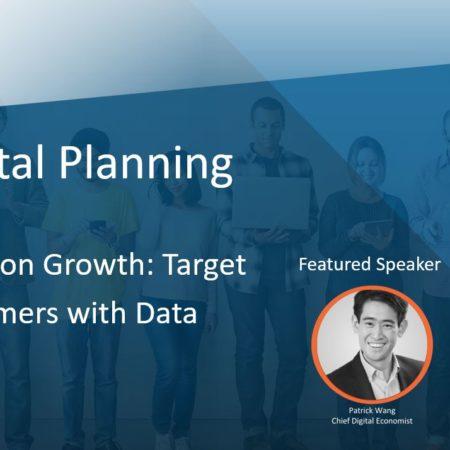Why being a “creative genius” is no longer enough in today’s digital world
Once upon a time in the era of traditional marketing, devising strategies for developing memorable brand creative across TV, print, and other media was a marketer’s primary responsibility. There were some performance-driven direct response variations on this theme as well, but the brand creative itself was the genius “big idea” for all campaign communications.
Then, digital became king almost overnight, giving marketers reason to panic. They were now faced with a creative dilemma: how to strike the careful balance between telling a compelling brand story and earning quantifiable clicks. And as measuring marketing performance quickly became the new norm – where new metrics were emerging each day across different platforms, devices, and media types – everyone from the CMO down started thinking like a “performance marketer.” Data suddenly became the new creative brief, signaling a seismic shift from “Don Draper” thinking to a newfound focus on hyper-targeting, deep segmentation, real-time optimization, and personalization. Campaign strategy was no longer about the proverbial “silver bullet.” The focus shifted to intimately knowing, finding, and delivering on consumer needs.
Fast forward to the present day. Digital marketing in the U.S. alone is poised to reach $120 billion by 2021, accounting for 46 percent of all projected advertising spend. This represents a combined 11 percent y/y growth from 2016 to 2021 across paid search, display and social media advertising, online video, and email marketing – and that pace doesn’t seem to be slowing down anytime soon. Why? Because digital is a solid marketing investment. Compared to other media, digital can be measured with absolute precision to help marketers spend smarter and more efficiently.
At LQ, we’ve learned that succeeding in today’s digital-first world means thinking and acting a lot less like marketers and, oddly enough, more like economists. Digital economists, that is. To help explain what I mean by this, it’s worth revisiting our Economics 101 days to understand how we can approach customer acquisition through the lens of:
- Unit Economics
- Supply + Demand
- Marginal Cost < Marginal Revenue
Unit Economics
Unit economics is defined as the direct revenues and costs associated with a particular business model, expressed on a “per unit” basis. In other words, it’s about breaking down the revenue and costs related to a particular customer to understand what ultimately drives profitability.
Let’s use a lemonade stand to illustrate this concept. Say you charge $1 per glass of lemonade. Now, let’s breakdown what goes into that $1. The lemonade costs you 6 cents to make; your location, table, and umbrella amount to about 9 cents; your labor is 25 cents (we are in California, after all!); and your marketing – flyers in the park and other signage – is only 2 cents. Your unit economics for that glass of lemonade are roughly:
- Revenue: $1
- Expenses: $0.42
- Profit: $0.58
Based on this breakdown of costs, unit economics says that I am able to generate 58 cents of profit for every customer who purchases a glass of lemonade from me for $1.
Instead of focusing on profits, a digital marketer might measure success purely based on quantifiable campaign metrics: total spend, number of leads generated, cost per lead, cost to close a sale. A digital economist, on the other hand, prefers to approach success by asking bigger picture question: “How can I increase my profits by adding more units?”
When we speak to our clients about profitable growth, we start by asking a few important questions. How do you make your money? What’s the average cost to acquire a new customer? How long do customers stick around? How much do you earn from them (LTV)? Then, we dig a little deeper to understand how the answers to those questions vary by product, geography, demographics, and so on. The end goal here is to understand what levers we can pull to move a business forward in a profitable way. This informs how we approach a unique customer acquisition strategy for each of our clients. Unit economics essentially guides our way.
Supply + Demand
Supply and demand is formally defined as the amount of goods and services available for people to buy (supply) compared to the amount of goods and services people want to buy (demand). In its simplest form, it speaks to market dynamics and competition. Either way, this principle is at the heart of digital acquisition.
The world of digital marketing is an auction-based environment. Before kicking off any campaign, you need to ask yourself how much you are willing to pay to acquire a customer, considering what the market clearing price is.
Let’s look at another example. Say you’ve identified two specific customer segments that you’d like to target in your next campaign. Both are worth $50 to your business. Time to start bidding. You quickly learn that it costs $25 to acquire “Customer A” and $75 to acquire “Customer B.”
The difference in cost to acquire these different customer segments may tell us something unique about the market: 1) that the total supply of “Customer B” is potentially less than “Customer A,” and that they are harder to find; 2) that competitors are willing to pay more to reach and engage “Customer B,” which makes it even harder for you to break through the noise; or 3) that you may be able to extract more value from “Customer A” because there are either more of them available to you in your target market or their attention is not being commandeered as much by other competitors (or both!).
If we approached this scenario in averages, as many marketers tend to do, if half of our new customers were from the “Customer A” segment and the other half were from the “Customer B” segment, then you could say that we acquired them for an average cost of $50 per new customer. And since a new customer is worth $50 to us, we therefore broke even.
Unfortunately, that’s not how economists think, nor is it how we would actually behave in an auction. The truth is, we would bid aggressively on “Customer A” – and we would bid to win – bidding up to $30, $40, or even $45 at most to acquire each new “Customer A” to ensure we still make money from each new customer acquired. In that same train of thought, we’d be forced to abandon any hopes of acquiring “Customer B” because we’d lose money the moment we entered that auction for any price above $50.
Long story short: you need to not only know who your target customer is, but also understand the market clearing price to win their attention, always proceeding with profitability in mind.
Marginal Cost < Marginal Revenue
To put it simply, marginal cost is the additional cost incurred for the production of a single unit of a product or service. Relatedly, marginal revenue is the gross revenue earned from selling one additional unit of a product or service.
Economics tells us we should continue to increase volume as long as marginal revenue exceeds marginal cost. The crudest example of this is a single seat on an airplane. The plane, the fuel, the flight crew, and all other fixed costs will be spent to operate the flight, whether or not we add one more passenger. The only marginal cost that might come with filling another seat at the gate could be the cost associated with providing an additional free in-flight beverage. So technically, airlines should never really charge more than $1 (or some minimal amount) to add one more passenger at the gate because the marginal revenue will always exceed the marginal cost vis-à-vis the fixed costs already incurred. Any additional revenue is just gravy. If you travel often, you know that airlines do not behave this way.
Marketers overlook this all too often when talking about adding volume on digital channels. Why? Because they have a tendency to think in terms of overall costs and short-term metrics, such as return on ad spend (ROAS). Here’s a great example. A current client of ours was getting 70 percent of the volume at around $0.50 per click. To outbid competitors, they would have to get the last 30 percent at $1.50 per click. We advised them to take on more volume, which cost about $20,000 more, but their response was: “That’s way too expensive!”
Well, not really. Their marginal revenue still exceeded the marginal cost of taking on that extra volume. Campaign 1 cost them $10,000 and generated $50,000 in revenue (5:1 ROAS) while Campaign 2 cost them another $30,000 and generated $90,000 in revenue (3:1 ROAS).
| Phase | Ad Spend | Revenue | ROAS |
|---|---|---|---|
| Campaign 1 | $10,000 | $50,000 | 5:1 |
| Campaign 2 | $30,000 | $90,000 | 3:1 |
| DIFFERENCE | +$20,000 | +$40,000 | 2:1 |
They thought we were looking at the metrics in the wrong way; from their point of view, the new spend was inefficient. In an economic view, however, they are still achieving profitable growth by spending a marginal cost of $20K more to earn a marginal revenue of $40K. Honestly, a company should bet on those odds any day.
It’s Time to Think Like Digital Economists
Like economics, digital marketing is a numbers game – and those numbers don’t lie. But the difference with digital economist thinking is that it gets you to measure success in terms of lifetime value, not volume. Also, it ensures that you remain fanatically focused at all times on targeting, reaching, engaging, and converting only the most profitable customers for your business. If you take a step back and think about it, this mindset shift will not only help boost your bottom line – and help you achieve your business objectives better than ever before – but it will also improve the overall effectiveness and efficiency of your marketing efforts. It’s honestly a win-win – that is, as long as you allow yourself the freedom to get out of your digital marketing comfort zone.





